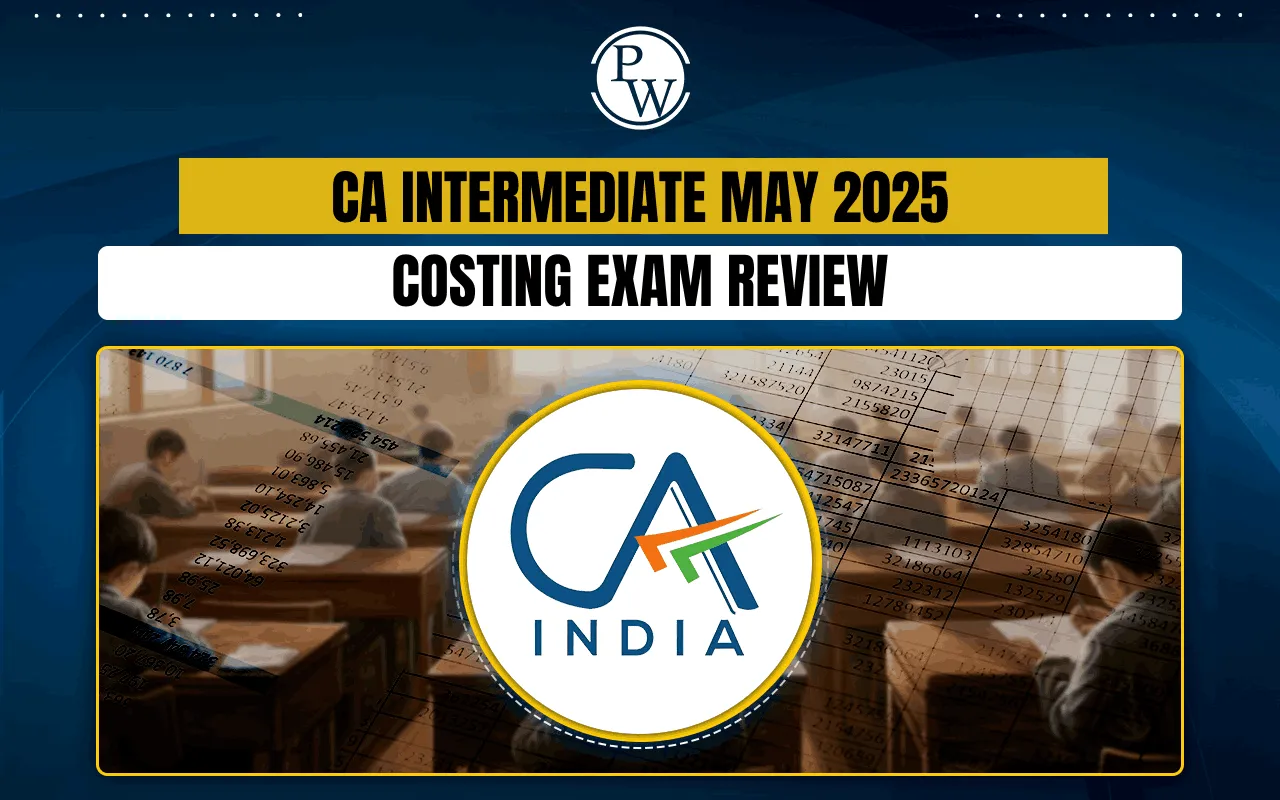
The CA Intermediate May 2025 Costing Exam Review brings forward a comprehensive look into how students experienced the exam, including their feedback and section-wise analysis. As one of the core subjects, Costing often challenges students with its depth and complexity.
While this attempt saw a mix of feedback, students generally found the exam slightly lengthy but manageable, with many attributing their success to the solid preparation provided by sources like PW CA Intermediate Courses. This article will dive deeper into the Costing Exam Review and analysis to help future aspirants prepare better.Student responses provide valuable insights into the CA Intermediate Costing Exam Review. While some students found the exam manageable, others struggled with the length and complexity of questions. Here are a few shared experiences:
One student remarked, "The paper was easy but MCQs were tricky," highlighting the deceptive simplicity of the multiple-choice questions.
Another shared, "The paper was okay; this is my second attempt, and it was better than the previous one," indicating a perceived improvement in the exam's structure or their preparation.
A third student noted, "MCQs were tricky; the paper was average; some questions were hard," pointing to specific challenges within the exam.
1. Introduction to Cost and Management Accounting:
This foundational chapter was covered extensively in the exam, with questions focused on basic cost concepts and the role of management accounting in decision-making. Students found this section relatively easy as it required a clear understanding of basic principles.2. Material Cost and Employee Cost:
These chapters carried moderate weight in the exam. The questions on Material Cost required students to compute inventory levels, EOQ (Economic Order Quantity), and various cost control techniques. The Employee Cost section included questions on wage calculation and incentive schemes. Most students found these sections straightforward but somewhat time-consuming due to the detailed calculations involved.3. Overheads: Absorption Costing Method & Activity-Based Costing:
Overheads and Activity-Based Costing (ABC) played a significant role in the exam. While Absorption Costing questions were direct, focusing on overhead allocation and absorption rates, the ABC questions tested students' ability to apply concepts to practical scenarios. Students who had practiced application-based problems were able to perform better in this section.4. Cost Sheet & Cost Accounting Systems:
The Cost Sheet section was well-represented in the paper, with questions requiring students to prepare detailed cost sheets for different industries. The Cost Accounting Systems section included questions on integrated and non-integrated systems, which were considered moderate in difficulty. This section was time-consuming but manageable with good preparation.5. Process & Operation Costing, Joint Products & By Products:
This section tested students' ability to apply costing methods to different production processes. Students found the questions on Process Costing and Joint Products fairly easy but noted that the calculation-intensive nature of these questions made it difficult to complete the paper on time.6. Marginal Costing & Standard Costing:
The Marginal Costing and Standard Costing sections were crucial in the exam. Marginal costing questions focused on break-even analysis and decision-making, while standard costing involved variance analysis. Many students found these sections to be high-scoring, provided they had a strong conceptual understanding.7. Budget and Budgetary Control:
This section required an understanding of the different types of budgets and their preparation. Students found the questions from this chapter moderately challenging, as they involved both theory and practical application. Proper preparation from the Budget and Budgetary Control chapter helped students manage this section effectively.Master the Basics
Strong fundamentals in costing concepts like marginal costing, variance analysis, and process costing are crucial. Ensure you understand the logic behind formulas and their applications. Revisiting study material and practicing examples from ICAI modules can strengthen your foundation.
Focus on MCQs
MCQs are a scoring area in the Costing Exam Review. Practice a variety of questions from different topics to improve speed and accuracy. Pay special attention to conceptual clarity, as tricky MCQs often test the basics.
Time Management Techniques
Time management is critical for success. Allocate specific time slots for each question during practice sessions. Solve mock tests under timed conditions to build speed and efficiency. Learn to identify and attempt high-scoring questions first to maximize marks.
Use Guidance
Guidance from dedicated faculty, such as the strategies taught by CA Wallah, can make a significant difference. Enroll in comprehensive courses that provide conceptual clarity, tricks for solving complex problems, and regular test series.
Mock Tests and Past Papers
Regularly solving mock tests and past papers is an effective way to identify weak areas and improve. Analyze your mistakes, understand the solutions, and ensure they’re not repeated in the exam.
Revise Smartly
Revise your notes, focus on frequently tested topics, and avoid last-minute cramming. Consistent and focused revision is more effective than hurried preparation.
Join PW CA Intermediate Courses for guidance and strategic preparation.